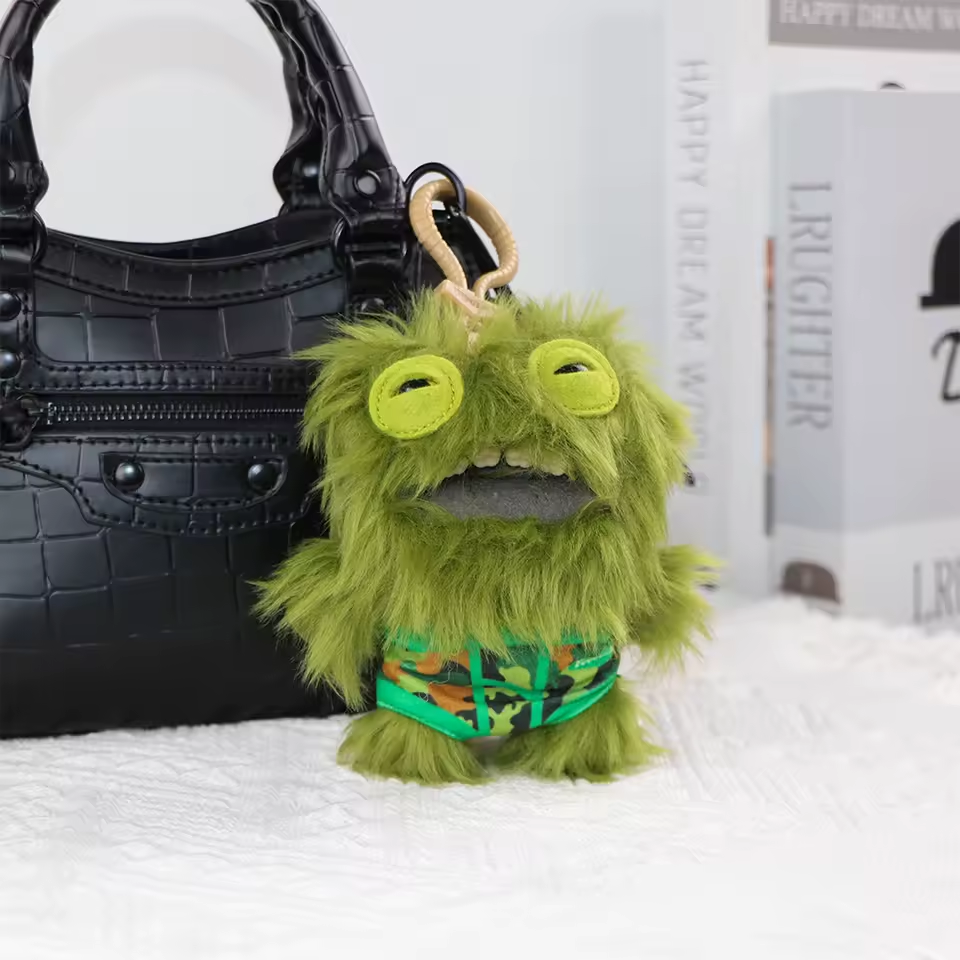What Makes Fuggler Dolls So Popular? The Psychology Behind Their Appeal

With their human-like teeth, button eyes, and deliberately unsettling appearance, Fuggler dolls seem designed to repel rather than attract. Yet these "Funny Ugly Monsters" have developed a passionate following and continue to be highly sought-after collectibles. What explains the paradoxical popularity of these creepy-cute creatures?
The Appeal of the Uncanny
Fugglers occupy a fascinating psychological space known as the "uncanny valley" - a concept that describes our reaction to things that appear almost, but not quite, human. While many toy manufacturers avoid this territory, Fugglers deliberately embrace it with their human-like teeth in otherwise monstrous faces.
This uncanny quality creates a complex emotional response - a mixture of discomfort and fascination that's more engaging than the simple response we have to conventionally cute toys. This complexity makes Fugglers more memorable and discussion-worthy than their more conventional counterparts.
Counter-Cultural Aesthetics
In a market saturated with perfectly cute, flawless characters, Fugglers represent a refreshing counter-cultural alternative. Their popularity reflects a growing appreciation for aesthetics that challenge conventional notions of beauty and cuteness.
This "ugly-cute" or "creepy-cute" aesthetic has gained traction across various media and art forms, from Tim Burton films to contemporary art toys. Fugglers tap into this cultural current, offering an alternative for those who find traditional cuteness too saccharine or predictable.
The Collectible Factor
Several elements of the Fuggler design and marketing strategy have enhanced their collectibility:
- Variety and uniqueness: With numerous designs, colors, and expressions, each Fuggler feels distinct
- Personality traits: Each Fuggler comes with its own backstory and characteristics
- Limited editions: Special releases create scarcity and drive collector interest
- Customization potential: Many collectors enjoy creating outfits or accessories for their Fugglers
- Display value: Their distinctive appearance makes them conversation-starting display pieces
The combination of these factors creates a strong "gotta catch 'em all" impulse among collectors, who often find themselves unable to stop at just one Fuggler.
Emotional Connection and Anthropomorphism
Despite (or perhaps because of) their unsettling appearance, many collectors develop strong emotional connections with their Fugglers. The human-like teeth and expressive faces make it easy to anthropomorphize these creatures - to project human emotions and personalities onto them.
This phenomenon is enhanced by the "adoption" framing of Fuggler ownership. Rather than simply purchasing a toy, collectors are "adopting" a monster with its own personality and quirks. This narrative framework encourages a more personal relationship with the product.
Social Signaling and Community
Owning and displaying Fugglers sends certain social signals about the collector's personality and aesthetic preferences. They suggest a sense of humor, an appreciation for the unconventional, and perhaps a slight rebellious streak.
This signaling function has helped create a community of like-minded collectors who share appreciation for Fugglers' unique charm. Online groups, social media hashtags, and collector meetups have strengthened this community aspect, making Fuggler collecting a social experience as well as a personal hobby.
The Joy of the Unexpected
In a world where many products play it safe, Fugglers offer something genuinely surprising and different. Their unexpected combination of cute plush bodies with disturbing facial features creates a cognitive dissonance that many find intriguing and refreshing.
This element of surprise extends to the collecting experience itself, particularly with "blind box" or mystery packaging formats where collectors don't know which design they'll receive until after purchase.
Cultural Timing
Fugglers' popularity also reflects broader cultural trends toward embracing imperfection, authenticity, and uniqueness. In an era of carefully curated social media presences, there's something refreshingly honest about these deliberately ugly creatures.
Their rise coincided with growing cultural conversations about beauty standards, inclusivity, and the value of embracing our own quirks and "flaws" - themes that resonate with many Fuggler collectors.
The enduring popularity of Fuggler dolls demonstrates that in the world of collectibles, being deliberately different can be a powerful advantage. By challenging conventional notions of what makes a desirable toy, Fugglers have carved out a unique and lasting niche in the collectible market.